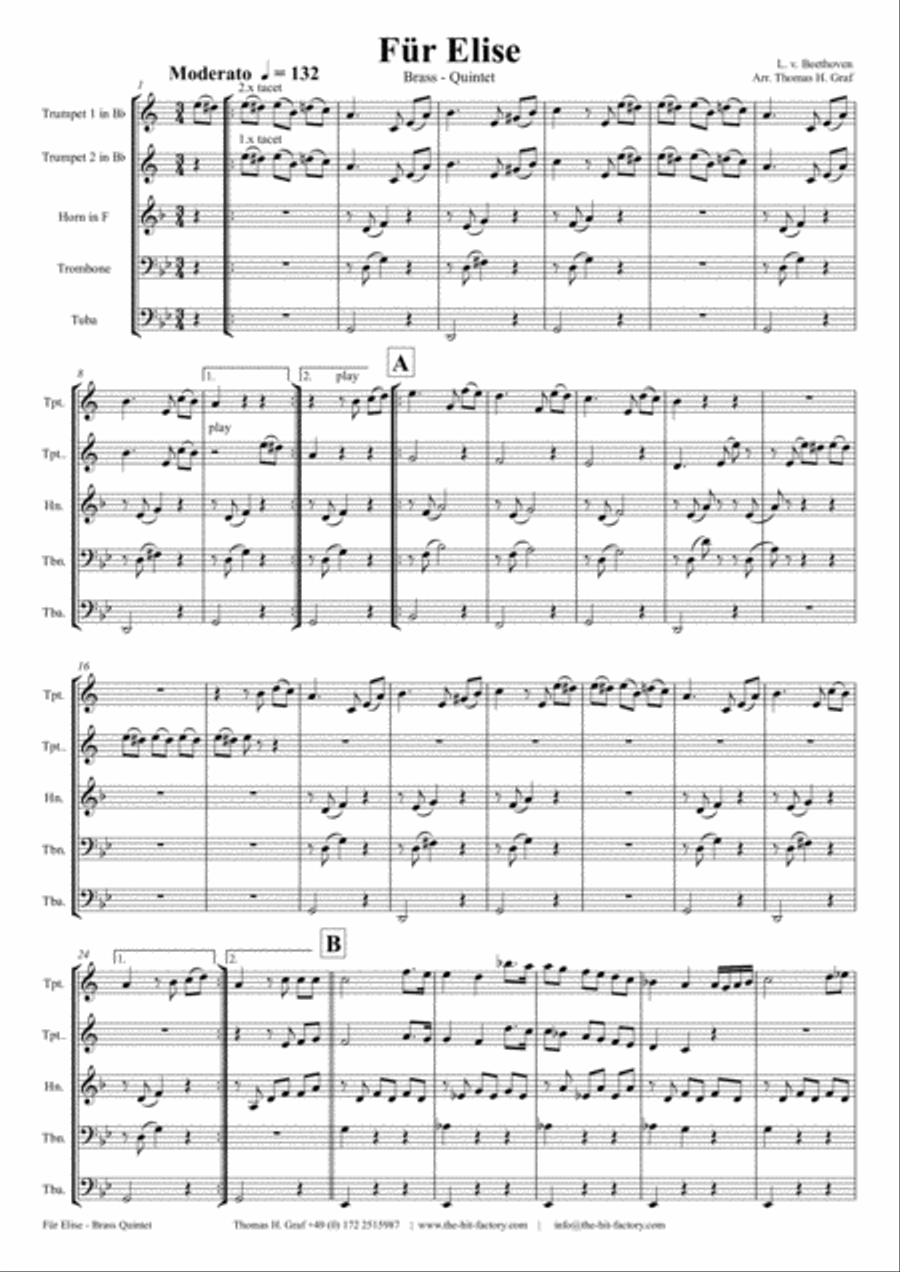Composed by L.v. Beethoven. Arranged by Thomas Graf. For Trumpet,Trombone,Tuba,Horn in F,Euphonium,Brass Quintet. Romantic Period,Classical Period,Repertoire,Classroom,Birthday. Intermediate. Score,Set of Parts. Published by Thomas Graf - the-hit-factory.
